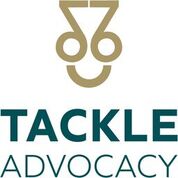Supporting and Advocating for your Child During COVID-19
By Guest Blogger Annie Trent, owner of Tackle Advocacy
COVID-19 is dramatically changing every American’s life – including our children’s. As school systems turn to distance learning due to stay at home or shelter in place orders across America, our children have been thrust into a new, very different form of schooling. Given my experience as an education advocate, a special needs teacher for over 20 years, and a parent, I completely understand that parents are feeling frustrated and concerned about their child’s education right now.
This is an unprecedented time, and we are all dealing with uncharted territory.
 As the process keeps evolving and differs across states and school systems, parents who have a child with special needs are worried about how their child’s unique learning needs will be met under this new format for learning.
As the process keeps evolving and differs across states and school systems, parents who have a child with special needs are worried about how their child’s unique learning needs will be met under this new format for learning.
Schools should make every effort to ensure that the interests of each child are being met during this crisis. According to the Individuals with Disabilities Education Act (IDEA), children with special learning needs have the right to a free appropriate public education in the least restrictive environment. However, this is an unusual time, and IEPs (Individualized Education Plans) were written with the assumption that children would be in a physical school building to receive their individualized learning.
So now, we all need to work collaboratively and be flexible to meet the needs of children.
To help families navigate through this time, I have created a workable “To Do list” for parents of children with an IEP so they can continue to help their child while they are at home and then have the ability to better advocate for them when school resumes.
 Top 5 Things You Should Focus on During the COVID-19 Crisis If Your Child Has an IEP:
Top 5 Things You Should Focus on During the COVID-19 Crisis If Your Child Has an IEP:
1. DOCUMENTATION… DOCUMENTATION…. DOCUMENTATION…Pull out or print your child’s current IEP and create an at-home learning notebook. You will need three sections. Place the current IEP and all paperwork associated with it in SECTION ONE. Read through this IEP and highlight the goals that you feel are most feasible and most important to work on at home. In SECTION TWO, create a specific goal page for each of these IEP goals. This will be the place for you to record your child’s daily activities to address each goal and any progress they make toward meeting this goal. Finally, SECTION THREE should include all communication between you, your child, and the school during school closure. Documentation is the KEY!
2. Don’t be afraid to ask for help. Email your child’s special education teacher and ask for online activities geared toward specific goals. Engage a virtual tutor to work with your child on specific IEP goals or have someone make at-home activities you can use with your child to work on these specific goals. Remember to document each time you reach out for help. Record who you emailed or called, date of correspondence, response/service provided, and personal cost, if any.
 3. Ask for a virtual meeting with your child’s general classroom teacher and the special education teacher to discuss current goals and how you can help at home. Some teachers will be set up to meet virtually while others will not. Regardless, document the day and time you requested this meeting and the teacher’s response. If a virtual meeting is held, please ensure that minutes are taken and that you receive a copy for your notebook.
3. Ask for a virtual meeting with your child’s general classroom teacher and the special education teacher to discuss current goals and how you can help at home. Some teachers will be set up to meet virtually while others will not. Regardless, document the day and time you requested this meeting and the teacher’s response. If a virtual meeting is held, please ensure that minutes are taken and that you receive a copy for your notebook.
4. Ensure your child has equal access to technology and assistive devices that are needed to ensure that they have equal access to the educational material presented through distance learning formats. Just because something is not listed in the current IEP does not mean you cannot ask for it now. The learning environment has changed, so make sure your child has what he or she needs at home to learn successfully. Remember to document what you ask for, who you ask, when you ask, and the response received. If additional technology and assistive devices are determined to be needed to ensure your child’s educational needs are met, then document how long it takes for your child to receive these additional supports at home.
 5. Remember that the procedural safeguards in place with regard to IEP annual review, reevaluations and initial evaluation timelines are in a state of flux during the COVID-19 pandemic. To meet your child’s needs, collaborate with school personnel when school resumes evaluating whether the current IEP goals have been met and the appropriate direction for new goals. Remember, the IEP team will need accurate information about Present Levels of Performance (PLOP) before moving forward with the writing of a new IEP, and so it will take your child’s teacher some time to conduct the necessary assessments. While you should advocate for your child, please remember that a collaborative, non-confrontational approach with school personnel is most advantageous for your child. However, the IEP learning notebook that you create during this crisis will be a vital tool when the IEP team convenes to discuss your child. Once school resumes, compensatory education may be a consideration for children with significant regression. Distance learning for many will not be an advantageous way to learn and could definitely have an adverse effect on student growth across the board.
5. Remember that the procedural safeguards in place with regard to IEP annual review, reevaluations and initial evaluation timelines are in a state of flux during the COVID-19 pandemic. To meet your child’s needs, collaborate with school personnel when school resumes evaluating whether the current IEP goals have been met and the appropriate direction for new goals. Remember, the IEP team will need accurate information about Present Levels of Performance (PLOP) before moving forward with the writing of a new IEP, and so it will take your child’s teacher some time to conduct the necessary assessments. While you should advocate for your child, please remember that a collaborative, non-confrontational approach with school personnel is most advantageous for your child. However, the IEP learning notebook that you create during this crisis will be a vital tool when the IEP team convenes to discuss your child. Once school resumes, compensatory education may be a consideration for children with significant regression. Distance learning for many will not be an advantageous way to learn and could definitely have an adverse effect on student growth across the board.
Although students with disabilities continue to receive protection under IDEA and continue to have the right to a Free and Appropriate Education (FAPE), how the students receive this specially-designed instruction right now may look very different. Since Betsy DeVos, US Secretary of Education, has indicated that school systems will not be held accountable for any inability to serve their special needs students during the COVID-19 crisis, it is now more important than ever to make sure families have as many tools they need to help their children.
Right now, with so much chaos and confusion in our world and for our children, I hope that providing these five steps will help you weather the storm and be prepared for going back to school – and for the better days that will come.
 Tackle Advocacy’s services include:
Tackle Advocacy’s services include:
- One-on-one tutoring
- Review of student educational records
- Attendance at parent/teacher conferences
- Attendance at meetings: IEP (Individualized Education Plan), Section and FBA (Functional Behavior Analysis) and BIP (Behavior Intervention Plan)
- Help with review of accommodations and modifications
- Correspondence with child’s teachers, administrators or school district
- Research of additional resources available for your child’s unique learning needs
Visit them online here: tackleadvocacy.com
Annie B. Trent is the owner of Tackle Advocacy and a special education advocate and tutor. She works with parents and school personnel collaboratively to help ensure the individualized instruction a child is receiving meets the specific needs of that child. As a former teacher and a parent of a child with special needs, she sees both viewpoints and uses her unique perspective to help parents traverse the often confusing world of special education. Annie B. can be reached at AnnieB@TackleAdvocacy.com.








Great article and valuable information Annie B.